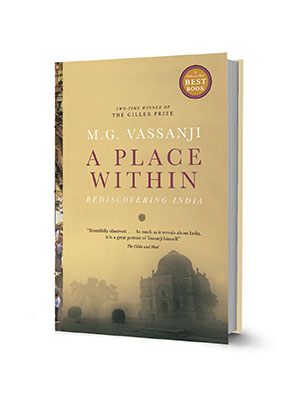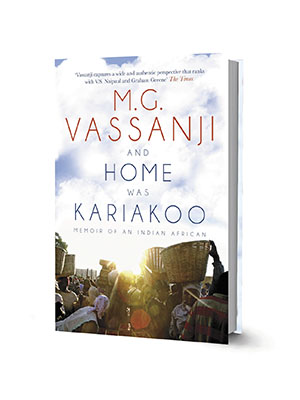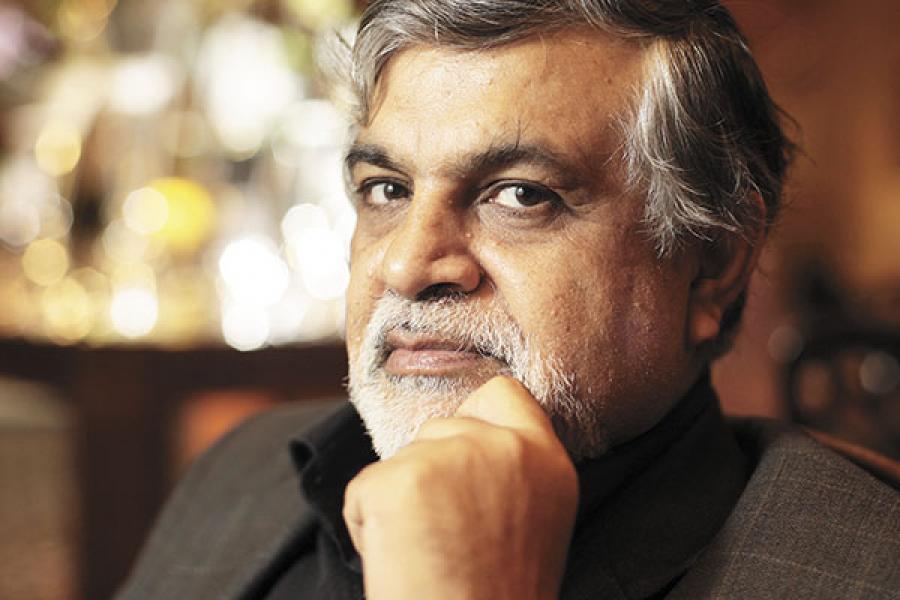
The in-between world of renowned writer MG Vassanji
The Kenya-born award-winning author on the importance of history, identity and reaching out to disparate audiences
Both novelist and non-fiction writer, a person of Indian origin who feels at home on three continents, MG Vassanji, 65, prides himself on his contradictions. These have served him well in his writing, which has won him numerous awards, including a regional Commonwealth Writers’ Prize for his first novel The Gunny Sack (1989). In novels like The In-Between World of Vikram Lall (2003), Amrika (1999) and The Magic of Saida (2012), Indian characters from East Africa find themselves pulled between the surface attractions of the contemporary West and the exigencies of their ancestral memory.
His last book, And Home was Kariakoo: A Memoir of East Africa (2014), is at one level a recounting of his own childhood in Tanzania (where he was raised); it is also a meditation on the forces of history and culture that shape a person’s life. Yet, Vassanji is never abstract. From the aroma of freshly made mandazi (African doughnut) to the lilting rhythm of Swahili greetings, he delivers the full palette of sensory details that brings his stories to life.
Through his eight novels, two short story collections and two travel memoirs, Vassanji has made a signal contribution to the literature of the Indian diaspora, acquainting several generations of readers in Canada, the US and India as well with his magical yet little-known corner of East Africa. Edited excerpts from an interview:
Because I existed on the edges of all of them, being brought up in Africa among Asians, blacks and whites. Those interactions leave a deep impact on you while growing up. There were a lot of things that went unsaid but which you felt as a child, and which you then want to explore as an adult—as a novelist, it’s automatic to try and explore those phenomena.
Q. In your 2008 non-fiction book, A Place Within: Rediscovering India, you write that “history is addictive” and that you have an obsession with the past. Why is history so important?
When you go away from where you were brought up, you find that you lose everything, especially for communities like ours in Africa. The idea of India was distant and local history was almost non-existent. Once I got to the US and Canada, I started to wonder where I had come from, and the historical one is the only sense of belonging that remained.
Also there is the question of finding out and not being able to find out—there are many things you cannot know, especially in a case like ours. What you cannot know you imagine; you create a new mythology with which you are comfortable.
Q. Where, or what, is home today?
Home is many places. Toronto is where I come back to, where I have the security of a bank account and a house. When I’m in Dar es Salaam, Tanzania, I feel at home, I speak the language and people don’t think I’m from elsewhere. It’s the same in India, there is an ease of communication and I feel that these are my people.
Q. Would you say that your own history is the primary influence on your work?
I am writing about people who live on the margins of global culture, and that requires a lot of work. You can’t look at my writing the way you look at [that of] a white Canadian writer. The problem for many of us is that we are pioneers, telling stories that have never been told, naming things that have never been named—even the names themselves are hard to pronounce!— and all of those things are on my mind.
It looks easy but I have to work very hard. A large part of my audience has never been to Africa or India, let alone understands the complexities of these communities. Even the language structures affect my writing because I have to bring these things across to the reader without making it obvious.
 Q. What is the reward for all that hard work?
Q. What is the reward for all that hard work?To reach an audience whom you never thought in your imagination that you might reach—that is satisfying. Like my novel The Assassin’s Song, which was set in Gujarat in medieval times, in the context of the Bhakti movement of mystics such as Kabir and Mirabai. It is set in a community of such believers, but also embedded partly in modern Gujarat and the problems that exist there now, and how this community of worshippers that considers itself neither Muslim nor Hindu is affected. It has been my most successful novel in India, but I was also invited to The City University of New York to give a reading and it was an audience of all black [American] women. I would never have imagined they’d identify with my book, but they did.
Q. Do you feel you’ve been received as an Indian writer by Indian audiences?
Indians in India have a very dual relationship with the West: On one hand, they emulate it, and on the other hand, they put it down. Indian writers who live abroad face that too. The level of serious criticism is a bit low; people don’t engage with the writing as such.
Q Is there a particular message you want to add to the public conversation around literature in general?
Stories are important. We have to be part of a global culture. You cannot be a nobody. That creates an insecurity that turns into problems for the following generations. When I speak in Africa this is what I say: If you don’t write about yourself, someone else will write about you and you will not like it.
(This story appears in the Jan-Feb 2016 issue of ForbesLife India. To visit our Archives, click here.)















